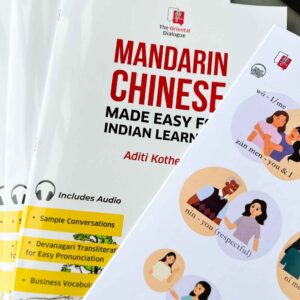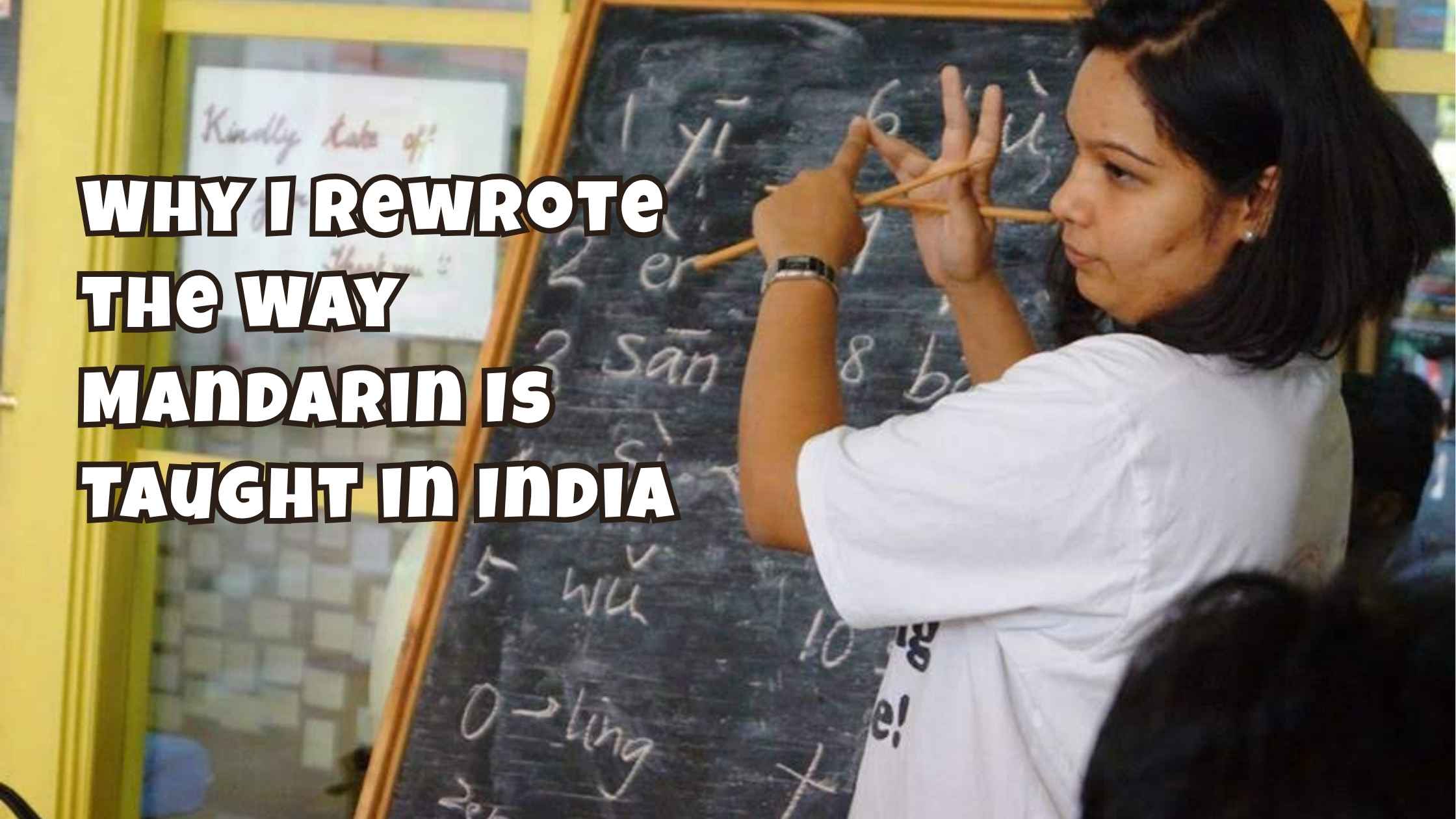A Founder’s Perspective by Aditi Kothekar | The Oriental Dialogue
When I began learning Mandarin Chinese back in 2005, I had no idea it would become such a huge part of my life — or that one day I’d build a language institute that teaches it differently.
But I do remember clearly how uninspiring and outdated it all felt at the time.
Learning Mandarin in 2005: Black, White, and Boring
The textbooks we used were printed in the year I wasn’t even born.
Imagine learning one of the most fascinating, visual languages in the world — through black-and-white pages, dry grammar explanations, and irrelevant content like how to write letters to friends.
In a time when email was already the norm, we were being taught how to address envelopes.
Even worse?
These books were written with American and European learners in mind, not Indians.
That meant:
- Cultural references we couldn’t relate to
- Explanations for grammar we already intuitively understood
- Examples that didn’t match how we actually use language in IndiaAs a learner, I constantly felt like:
“This could be made so much easier if it was designed for us.”
The Indian Context: We Needed a Better Mandarin Course
Over the years, I noticed how many Indians were traveling to China — for work, business, trade, and education.
Yet the syllabus and books available did little to help them prepare.
- No vocabulary for business scenarios
- No help with understanding local Chinese accents
- No bridge between Indian and Chinese linguistic structuresThis gap kept widening — and it inspired me to do something about it.
Designing Mandarin Courses for Indian Learners
Through The Oriental Dialogue, I decided to rewrite the experience of learning Mandarin from the ground up.
Here’s how we (me with my small team) made it different:
1. We created our own colourful books
No more dull, grayscale textbooks.
We designed materials that are vibrant, visually engaging, and Indian-context friendly.
In our books, we have even taken support from Devanagari to help with pronunciation — especially for learners new to tones or unfamiliar phonetics.
2. Our curriculum is practical and purpose-driven
We don’t waste time teaching things that don’t help.
Instead, we focus on:
- How to introduce yourself in Chinese
- How to negotiate at a factory
- How to order food, ask for vegetarian food, ask for directions, and discuss work terms
Everything is aimed at real-life use cases, not just exam prep.
3. We make class fun: flashcards, quizzes, games & more
Mandarin can be hard — but it doesn’t have to be dry.
Our courses include:
- Printable and digital flashcards
- Quizzes after every module
- In-class activities and games
- Speaking drills with peers and native speakersThis keeps learners engaged, motivated, and confident about using Mandarin in real life.
Learning Mandarin in India Shouldn’t Be Difficult — Just Designed Better
At The Oriental Dialogue, we believe that every language becomes easier when it’s taught in a way that respects the learner’s background.
And as someone who once struggled through irrelevant textbooks and outdated methods, I can proudly say — we’re changing that.
Our approach is practical, visual, and Indian-friendly — whether you’re preparing for a trip to China, or you are an Indian living in Singapore, aiming for HSK certification, or just exploring a new language.
🎓 Want to experience the difference?
Join our FREE ONLINE Mandarin demo session designed specially for Indian learners:
👉 Register here
Learn more about who we are and what we do:
🔗 About Us – The Oriental Dialogue




